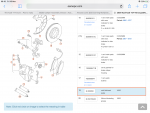Ceramic paste is a totally new lubricant to me, I have read a couple of threads on here where it's recommended for where wheels meet the hub and also windscreen wiper splines.
But, is it a better allrounder than copper grease (got tons of the stuff...) or is it just that the copper grease can accelerate galvanic corrosion (ooh, I love that description )
)
I have seen a brand mentioned on here - Plastilube, is this ceramic paste with a name on it?
http://www.ate-info.de/en/details/produ ... lube-75-ml
Thanks
But, is it a better allrounder than copper grease (got tons of the stuff...) or is it just that the copper grease can accelerate galvanic corrosion (ooh, I love that description
I have seen a brand mentioned on here - Plastilube, is this ceramic paste with a name on it?
http://www.ate-info.de/en/details/produ ... lube-75-ml
Thanks








